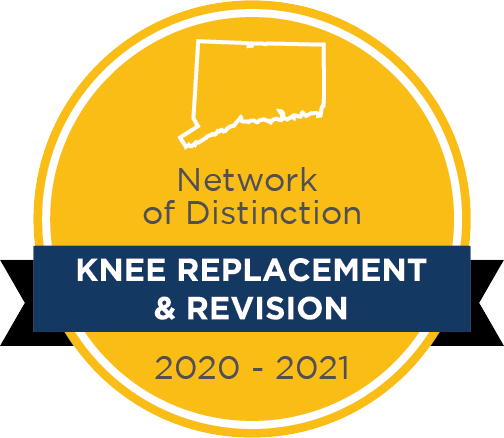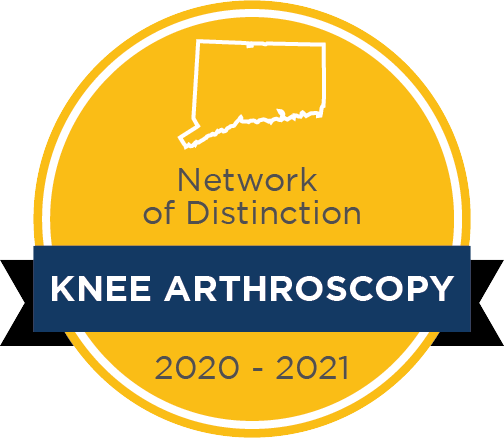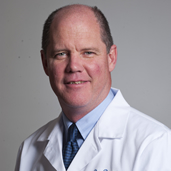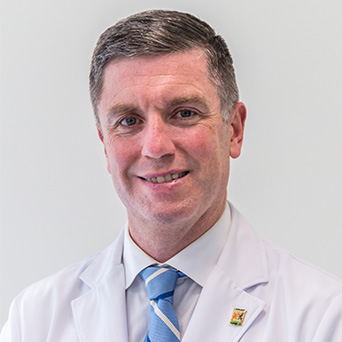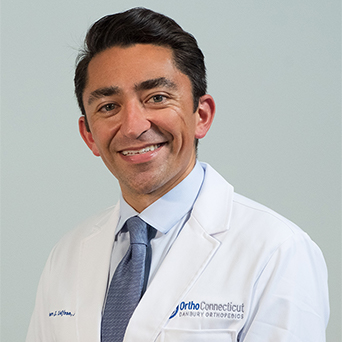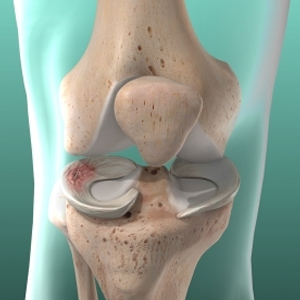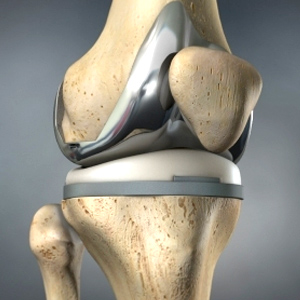Let Our Orthopedic Knee Specialists Diagnose and Treat Your Knee Pain
 Knee pain can have a profound impact on your daily life. Because of its location and its complex composition of bones, ligaments, tendons and cartilage, the knee is a key factor in your stability and movement. Whether your knee pain is the result of a fall, a sports-related knee injury or a chronic knee condition, the first step in treating knee pain is to get an accurate diagnosis from an orthopedic surgeon who specializes in knee treatment. We offer one of the top teams of orthopedic knee specialists, while being conveniently located.
Knee pain can have a profound impact on your daily life. Because of its location and its complex composition of bones, ligaments, tendons and cartilage, the knee is a key factor in your stability and movement. Whether your knee pain is the result of a fall, a sports-related knee injury or a chronic knee condition, the first step in treating knee pain is to get an accurate diagnosis from an orthopedic surgeon who specializes in knee treatment. We offer one of the top teams of orthopedic knee specialists, while being conveniently located.
Our team of knee specialists include:
The Total Joint Center of OrthoConnecticut is a leader in the full range of knee diagnosis, treatment and surgery. Our team of board-certified, fellowship-trained orthopedic surgeons have specialty training in the discipline, and perform leading-edge procedures using the latest technology resulting in faster, easier recovery. In addition to total and partial knee replacement surgery, as well as ACL reconstructive surgery and knee fracture repairs, we also offer minimally invasive arthroscopic knee surgery for nontrauma conditions. Experience indicates that arthroscopy results in faster recovery times, quicker return to an active lifestyle and greater patient satisfaction.
Non-surgical knee treatment is always the priority. Not all patients who come to the Sports Medicine and Total Joint Centers require surgery. For meniscus tears, osteoarthritis and knee-related cartilage disorders and some knee fractures, we will always explore nonsurgical options, including bracing and physical therapy, depending on the condition of the knee and the patient’s needs. We are especially sensitive in treating older patients who have experienced geriatric knee trauma or are suffering from knee osteoarthritis, rheumatoid arthritis, or other inflammatory joint diseases.
Our work goes beyond excellent results. Patients truly find personalized service and an individualized approach to treatment here. Working with our integrated team of knee specialists, along with our team of rehabilitation therapists, patients minimize their travel and time by having surgery, follow-up care and ongoing treatment services close to home.
You can have your knee surgery and post-op care performed close to home. We offer all of the most modern techniques of knee replacement and reconstruction surgery in most modern settings, all of which can be done locally at either the Western Connecticut Orthopedic Surgical Center, Danbury Surgical Center, Danbury Hospital, New Milford Hospital, or Sharon Hospital. This involves less travel time for you and your caretakers. In addition, all follow-up care will take place close to where you live, maximizing your time and convenience.
Knee Conditions and Treatment Frequently Asked Questions
Can Plantar Fasciitis Cause Knee Pain?
The simple answer is yes. Plantar fasciitis is a condition where the fascia (a thick band of tissue) that connects your heel to your toes becomes inflamed. The swelling can cause intense pain over time, most of which is felt as a stabbing sensation in the heel. Pain is usually worse in the morning and often subsides during the day. Plantar fasciitis can be caused by several different things: increased activity levels, low or high arches, weak ankles, aging, exercising on hard surfaces, and more.
Ongoing, untreated plantar fasciitis can lead to more detrimental effects like heel spurs and a change in the way you walk. If your gait is altered because of plantar fasciitis, it can cause pain in your knees. This symptom is a signal of worsening plantar fasciitis. So if you experience unexplained heel or knee pain, seek an evaluation by an orthopedic surgeon, who can diagnose the issue, determine if plantar fasciitis is the cause, and prescribe a treatment plan.
Can Sciatica Cause Knee Pain?
Sciatica occurs when you feel a sensation of pain radiating along your sciatic nerve, which runs from the lower back down to one or both legs. Most people who have sciatica develop it due to aging or a previous injury such as a herniated disk or bone spur. Pregnancy often causes sciatic as well. The pain from sciatica is normally only felt on one side of the body.
Because sciatica affects the entire leg, its presence can be linked to knee pain. Typically, the knee pain from sciatica will only be felt in one knee. Other symptoms of knee pain caused by sciatica include a weak knee that buckles, has trouble extending, and cannot bear weight.
How Long Does the Pain Last After a Knee Replacement?
Having a knee replacement can lead to significant pain after the procedure. Postoperative swelling is often a major source of pain for patients. Any bruising should disappear after one to two weeks and most swelling should be gone after three weeks. However, these numbers vary for different people, so you should talk to your orthopedic surgeon to ensure that your recovery is proceeding normally.
Your body needs to adjust to your new physical alignment and once you are walking, to a new gait. You will progress through a physical therapy program as you heal, and as the intensity of rehabilitation exercises increase, more strain will be put on the muscles and joints that have not been used in a period of time. Some level of pain often remains for several weeks to months.
Though it’s reasonable to expect some discomfort after knee replacement surgery, an effective pain management program can significantly reduce your level of pain and help boost the speed of your recovery.
What Causes Pain Behind the Knee?
General pain behind your knee can be caused by a variety of factors. These include but are not limited to:
- Baker’s Cyst: This is a fluid-filled lump or sac that forms behind your knee.
- Arthritis: Osteoarthritis, rheumatoid arthritis, and gout are all types of arthritis that may be associated with pain in the back of the knee.
- Infection: Infection in your knee joint, bone, or bursae may all be responsible for causing pain behind the knee.
- Injury: Damage to the muscles, tendons, and ligaments that surround the knee could cause pain behind the knee. For example, injuries to the hamstring, meniscus, or posterior cruciate ligament (PCL) can all be responsible for posterior knee pain. These injuries can come from overuse or be acute.
- Thrombosis: Deep-vein thrombosis occurs when there is a blood clot deep in your vein. This usually will happen in the pelvis, thigh, or calf. But it can cause pain in any part of the leg, including behind the knee. Thrombosis can be life-threatening, so if you believe that you are experiencing it, contact a medical professional immediately.
- Tumor: Some benign and malignant tumors can cause posterior knee pain.
What is Better for Knee Pain: Heat or Cold?
The basic rule to follow when deciding to apply cold or heat to your knee is to focus on the type of pain. For acute pain, new injuries, and swelling, you should use ice. Heat is best for longer-lasting, chronic knee pain. You shouldn’t use heat on inflammation, as it can cause swelling to worsen and slow the healing process.
Consult with your orthopedic surgeon for the proper application of a heating pad or cold pack to aid with joint discomfort. And if you’re looking to incorporate heat and cold into your workouts, remember that heat is best before a workout while ice is better for afterward.
We are pleased to be recognized as part of the State of Connecticut Health Plan’s Network of Distinction (NoD). OOrthoConnecticut has demonstrated an ability to deliver high-quality care for knee arthroscopy and knee replacement and revision surgery. This designation helps us to continue to provide top-quality care to benefit the collective health of the members using this new episode-of-care model.
